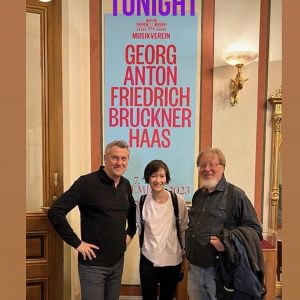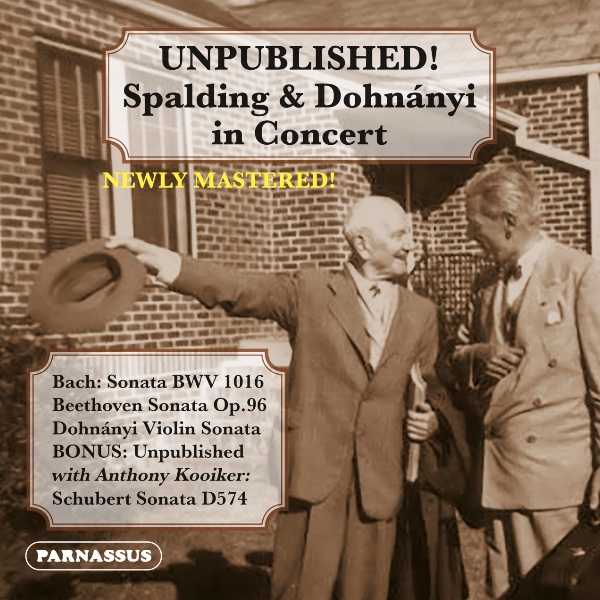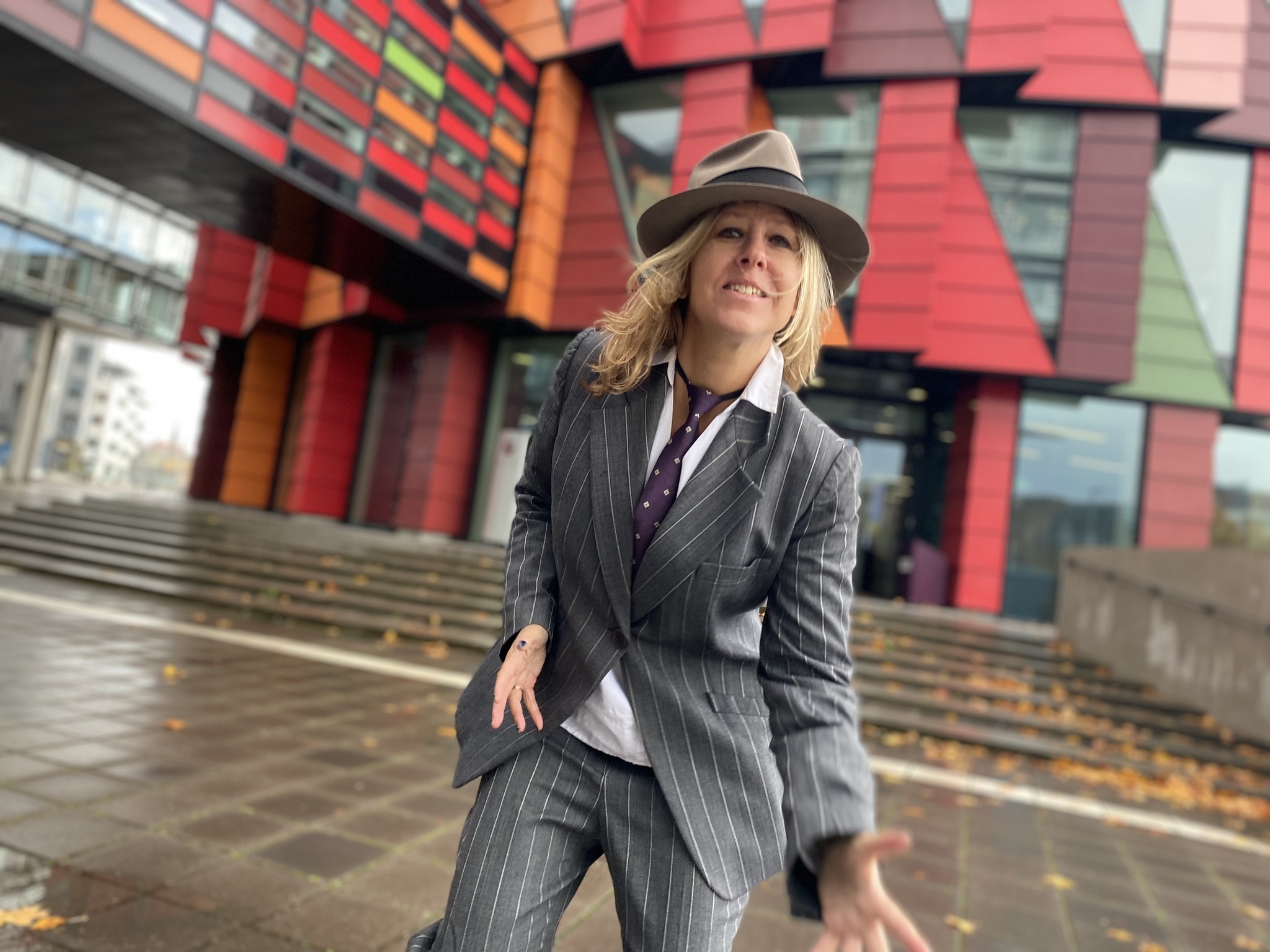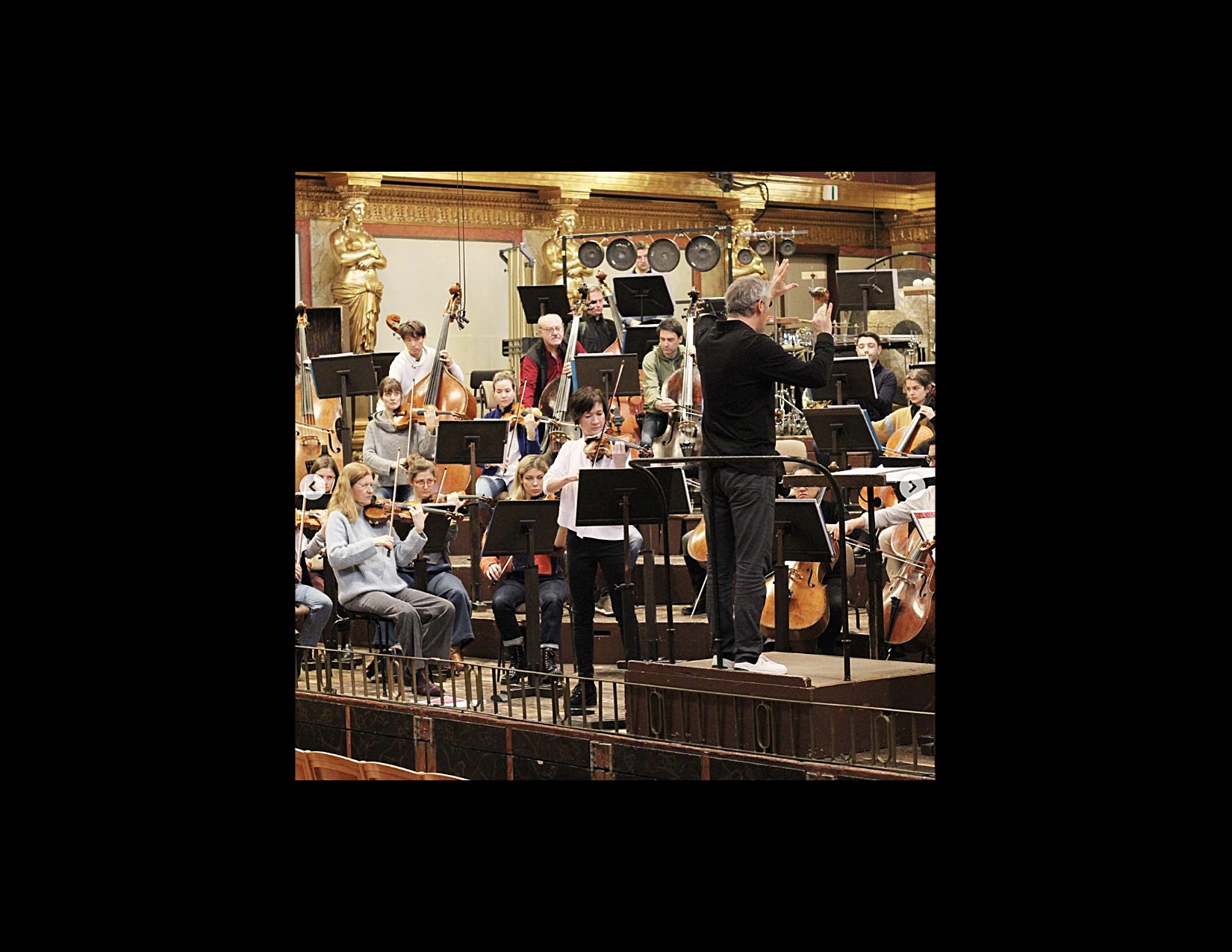Miranda has published an extended commentary on Georg Friedrich Haas’s Violin Concerto No. 2 that extends the scope of description and analysis in the liner notes that accompany the release on Urlicht AudioVisual. You can read them on her web site by clicking here. You can also download a pdf of the complete notes for the digital/CD release here.
-

“something special”
“The New York–based Swedish singer Sophie Dunér is rooted in jazz but also studied with Stockhausen (who died in 2007), and found herself focusing on the set of songs during the CovID-19 lockdown. She eventually took the set of songs into the studio, and couldn’t have found a finer accompanist than Steven Beck (credited here as “Steve”—perhaps that’s his jazz name). Beck has worked and performed with Elliott Carter, George Crumb and Pierre Boulez, as well as Dave Soldier and John Zorn. The 12 songs (the album’s 13th “bonus” track is American composer Francis Schwartz’ The Neon Pterodactyl) are brief and full of character, more artful than the verse/chorus structure of generations of popular music, with traits of both the planetary personality types and their mythic representations. Dunér doesn’t overplay the sketches… Beck is heard exclusively on Fender Rhodes, taking tasteful advantage of the ringing upper register and the grumbling lower… the recording — his first time playing a Rhodes — is something special, setting the songs back in the odd, soft rock era from which they came.”
– New York City Jazz Record
Available on CD and for streaming/download! -
Coming in November: Miranda Cuckson Plays Georg Friedrich Haas
UPDATE: You can download the press release by clicking here.
The world premiere recording of a major work of one of the world’s most celebrated living composers, Georg Friedrich Haas, will be released worldwide digitally and in CD format on November 21, 2025 on Urlicht AudioVisual.
 Violin Concerto No. 2 was written in 2017 for Miranda Cuckson, with whom the composer has long collaborated, and premiered that year with the Tokyo Symphony Orchestra conducted by Ilan Volkov. The present recording features Miranda’s live performance of Violin Concerto No. 2 at Vienna’s legendary Musikverein with the ORF Vienna Radio Symphony Orchestra conducted by Markus Poschner, recorded in concert on November 24, 2023. It is coupled with her recording of de terrae fine for violin solo.
Violin Concerto No. 2 was written in 2017 for Miranda Cuckson, with whom the composer has long collaborated, and premiered that year with the Tokyo Symphony Orchestra conducted by Ilan Volkov. The present recording features Miranda’s live performance of Violin Concerto No. 2 at Vienna’s legendary Musikverein with the ORF Vienna Radio Symphony Orchestra conducted by Markus Poschner, recorded in concert on November 24, 2023. It is coupled with her recording of de terrae fine for violin solo.Miranda has written, “Georg is one of the great musicians of our time and a warm person and friend. The emotion in his music has meant so much to me since meeting him so many years ago as an ensemble player and playing his music for him – his violin piece ‘de terrae fine’, the US premiere of ‘in vain’, and other works. I’ve since performed ‘de terrae fine’ many times. At the release concert for my album including ‘de terrae fine’, I was beyond thrilled when he told me he wanted to write a concerto for me.”
Digital release worldwide and US CD release date: November 21, 2025.
Download the press release here.
-

“… bringing to mind Joni Mitchell singing Charles Mingus”
“Vocalist Sophie Dunér is a jazz singer with an avant lean; Jay Clayton might be a reference, although the core of Dunér’s sound is richer, more like a professional lieder recitalist. Steven Beck is one of the great NYC new music pianists, and he plays the whole cycle on a Fender Rhodes. The pieces are generally treated like jazz, where they play the melody, improvise, and restate the melody. Dunér has written additional lyrics to the Stockhausen themes, bringing to mind Joni Mitchell singing Charles Mingus.
“Dunér worked with Stockhausen and he approved of her approach. The final effect is a bit sci-fi cabaret, like the entertainment on a cruise ship on a distant planet as two suns boil off in the distance.”
– ETHAN IVERSON, Transitional Technology
Links for streaming, download, and purchase here.
-

‘songful and fresh’
“Spalding fits the ‘inimitable’ label that Parnassus’s collection of violinist can claim as a given, and these mostly unpublished recordings (around 1950) are both songful and fresh. … the performances by Spalding and Dohnányi make this well-transferred disc indispensable for all lovers of quality chamber of music memorably performed.”
– Gramophone, August 2025Spalding and Dohnányi in Concert
Bach: Sonata No. 3 in E major, BWV1016 • Beethoven: Violin Sonata No. 10 in G major, Op. 96 • Dohnányi: Violin Sonata in C sharp minor, Op. 21
Albert Spalding, Ernő DohnányiSchubert: Grand Duo for Violin and Piano in A Major, D574 • Ravel: Vocalise-étude en forme de habanera
Albert Spalding, Anthony KooikerRecorded ca. 1950
Produced by Leslie Gerber
Restored and mastered by Gene Gaudette, Urlicht AudioVisual
Parnassus PACL96096We’re very happy about the press reception to Parnassus’s latest release. CD available from Presto, Amazon, and EuropaDisc – download available from Presto!
-

“Immersive immediacy”
⭐️⭐️⭐️⭐️”Hungarian born cellist János Starker was still a child when he started studying at the Liszt Academy in Budapest, where he knew Bartók and Kodály. Starker became a great evangelist for Kodály’s major cello works, making two recordings of the Duo for Violin and Ccello, and here’s a third, live in Sofia in 1986 with violinist Elmira Darvarova, who writes about performing with Starker just days before she escaped the scrutiny of Bulgarian security and absconded to the west (becoming the Met Opera’s first female concertmaster).
“It’s a potent partnership, alongside Starker’s 1950 recording of Kodály’s Solo Sonata, newly remastered with immersive immediacy.”
– BBC Music Magazine, August 2025Available for download and streaming on Qobuz and Presto.
Streaming on Apple Music Classical, Spotify, and Tidal.
CD available from ArkivMusic, ImportCDs, and Amazon, -

More praise for Sophie Dunér and Steve Beck!
“Hot new cool jazz release. The Urlicht AudioVisual label has just released a new album by Sophie Duner and Steve Beck featuring Karlheinz Stockhausen’s Tierkreis and Francis Schwartz’s The Neon Pterodactyl. Stunning recordings that are anything but conventional.”
– LMNOP/dONW7/babysue (from their always entertaining new release roundup)
Links for streaming, download, and purchase here.
-

Critical acclaim for Sophie Dunér’s “Tierkreis”
“Dunér beguiles and draws everyone in.”
– Simon Jenner, Fringe Review.
Read the full review here.“The centre-piece of the evening was a terrific performance of Tierkreis, Stockhausen’s extraordinary rendering of the signs of the Zodiac into musical emblems, written originally for six percussionists and musical boxes. Dunér and Powell’s exposition was an edge-of-the-seat experience, the singer’s obvious facility with the weird contents of the piece fully on show. She had learnt it with the composer and so has lived a long with time with its Babel-inspired collection of polyglot vocalises. There are other versions of the piece floating in cyberspace but Dunér and Powell make a creditable case for theirs to be canonical.”
– Christopher Woodley, Bachtrack. Read the full review here.Sophie’s studio recording of Tierkreis is available on CD from Deep Discount and ImportCDs, for download from Qobuz and Presto, and streaming on all major platforms.
-

Five – count ’em five!! – rave reviews for Urlicht’s Kodály CD featuring Elmira Darvarova and János Starker
From the May/June issue of Fanfare:
This is an outstanding release. It couples a fine audio restoration by Gene Gaudette of János Starker’s recording of Zoltán Kodály’s Sonata for Solo Cello, originally made in 1950 for the Period label, with a first release of a 1986 live performance featuring Starker and violinist Elmira Darvarova of the same composer’s Duo for Violin and Cello. … Starker’s mastery of the Solo Cello Sonata is well known. … The music just pours out of him as if it were embedded in his DNA. … What makes Starker’s performance unique is the way he melds those disparate elements into a unified whole. Impressive as it is as a technical display, it is the music’s organic structure that holds onto our attention throughout its almost half-hour length, and the relentless energy of Starker’s playing. … When he returned in 1986, he pressured authorities to allow [Darvarova] to play the Duo with him, which they ultimately did after considerable resistance, but they gave her a very hard time about it. The emotion behind that experience was poured into the performance in a way that is crystal clear to any listener. Darvarova, who was the first female concertmaster of the Metropolitan Opera (and still the only one), is a stunning match for Starker not only technically but in the raw power that both produce. The stereo sound is excellent, creating the feeling of sitting in a reasonably center seat of a chamber music hall. This is a thrilling recording, one that I can recommend without reservation.
– Henry Fogel, FanfareThis is Want List material. Right from the start, the intensity, excitement, and passion of the performances rocketed through my speakers and immediately hit escape velocity. I was enthralled by the music and the music-making for the duration of the disc. … Darvarova and Starker are simply magnificent in the Duo. … Perhaps it was the raw, emotional response to her then-imminent escape from tyranny and persecution, but the violinist penetrates to the very core of this music. As with the Duo, Starker made several recordings of the Op. 8. This one is a practically immaculate restoration of his early recording made in 1950, and issued on LP on the Period label. … Credit for that sterling restoration and elimination of most extraneous noises goes to the engineer, who happens also to be the producer of this recording, Gene Gaudette. Bravo! … As noted at the outset, this disc will assuredly make my Want List this year. Urgently recommended.
– Keith R. Fisher, FanfareOn any list of great cellists of the 20th century, János Starker is sure to be at or very near the top of it. … That said—and even though half of the album at hand is devoted to Starker alone, playing the Solo Cello Sonata—in no small way, it’s violinist Elmira Darvarova who takes center stage in this production. … I can say that this is the finest performance of the Duo I have heard and am personally familiar with. … For the perfect mix of ingredients and blend of spices, it’s Starker and Darvarova’s Kodály Duo you want.
– Jerry Dubins, FanfareThe real gem on the present disc is the first release of a 1986 live performance from Sofia of the Duo, featuring a partnership with the violinist Elmira Darvarova. Darvarova, who is perhaps best known as the first (and only) female concertmaster of the Metropolitan Opera Orchestra, proves a fully equal partner. This is one of those special live performances that we are lucky to have preserved on disc. It abounds with fire and intensity, the two soloists playing off one another as though they had been working together for years, even though this one of their first collaborations! … [T]he present disc should not be missed by anyone interested in great string playing.
– Michael Vaillancourt, FanfareIt is wonderful to hear János Staker in this repertoire. These are recordings made in 1986 (the live Duo) and 1950 (New York City for the Sonata, which was first released on Period Records SPL-510). Gene Gaudette is both producer and remastering engineer for the present incarnation, and what a fine job he does. … Darvarova and Starker are at their finest in the Adagio, with Darvarova’s passion in overdrive. When the two instruments meet on a unison line, the effect is magical, and so, so powerful; and both control their instruments to the nth degree in the quieter late stages. The high violin melodies of the finale’s opening Maestoso e largamente, ma non troppo lento are spellbinding. Just that little bit of edge adds to their power, while the warmth lower down on Darvarova’s violin retains that tensile strength. Her exactitude of delivery in firmly articulated passages is similarly impressive. … Of all the performances I heard, it is the 1950 Starker op. 8 that seems to hold the best balance of grit and virtuosity. Hence the present Urlicht release holds huge documentary value. The Duo is a significant member of that piece’s discography, and now I would not be without Starker’s op. 8.
– Colin Clarke, FanfareHenry Fogel also interviews Elmira Darvarova (it follows his review), and we wholeheartedly encourage you to give it a read!
Available for download and streaming on Qobuz and Presto.
Streaming on Apple Music Classical, Spotify, and Tidal.
CD available from ArkivMusic, ImportCDs, and Amazon, -

TAS praises vintage Rabin and new Ethan Iverson
Two reviews in one issue of America’s premier audiophile magazine!
Michael Rabin on The Bell Telephone Hour – The Complete Broadcasts, Volume 2
Remastered by Urlicht AudioVisual
Parnassus PACD96093~94
“If you have a sweet tooth for violin bon-bons, the Parnassus confectionary has quite the selection for you. … These mono performances have been restored quite well… I, for one, will always welcome more Rabin.”
– Stephen Estep, The Absolute Sound, April 2025Ethan Iverson: Playfair Sonatas
Urlicht AudioVisual UAV-5960
“Ethan Iverson, [The Bad Plus’s] co-founder and original pianist, has an academic musical background and has infused his career with a desire to blur esthetic bound-aries. Iverson, who has since left the band (which is now a quartet), conceived of the Playfair Sonatas (named for the patron of this project, the impresario Piers Playfair) as a pandemic project. … The overall vibe of the six sonatas is pleasantly low key… displaying a good deal of TBP’s trademark whimsy, quirky rhythms, and jaunty melodies.”
– Peter Burmister, The Absolute Sound, April 2025
